Halloween approaches, and in the interest of providing you with All Hallow’s Eve reading material, we took to Twitter and asked you for some of your favorite literary witches! Below, we gathered some of your picks (and a few of our own)—from Hermione Granger to Granny Weatherwax, these ladies are sure to cast a spell on you. Let us know who we missed in the comments!
The Memory Garden—Mary Rickert
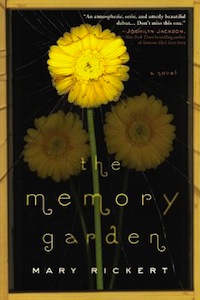
The Memory Garden was Mary Rickert’s debut novel after the success of the World Fantasy Award-winning short story collection Map of Dreams. Nan has to keep some secrets from her granddaughter, Bay—particularly the bad times she spent years ago with her friends Mavis and Ruthie. But over one reunion weekend many truths are revealed, including the fact that Bay can see the ghosts that live in Nan’s garden. Only with the help of the three elder women can Bay learn to accept her gift, and use it to heal her family’s torturous past.
Lewis Barnavelt series—John Bellairs and Brad Strickland

Mrs. Zimmerman is no black-cloaked crone. Instead she’s a friendly, vibrant woman who loves purple and does her best to help her neighbors, Lewis Barnavelt and Rose Rita Pottinger, as they embark on magical adventures. She pops up in several of John Bellair’s New Zebedde books, but is most central to The House with a Clock in its Walls, The Letter, the Witch, and the Ring and The Ghost in the Mirror.
All Souls Trilogy—Deborah Harkness
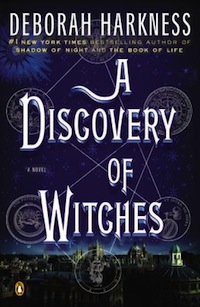
After Diana Bishop takes some notes from a medieval alchemy manual, Ashmole 782, she sends the book back to the stacks without realizing that she’s just unleashed a centuries-old spell, and now its her responsibility to break it. Harkness’ All Souls Trilogy—A Discover of Witches, Shadow of Night, and The Book of Life—follows Diana, and the helpful vampire geneticist Matthew Clairmont, as they travel into Elizabethan London, France, and finally Venice to save the modern world from an ancient evil.
The Witching Hour—Anne Rice
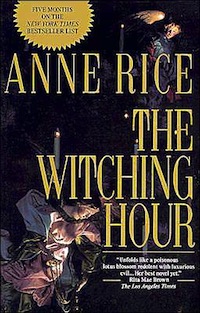
A brilliant neurosurgeon named Rowan Mayfair! A secret occult legacy! A demon named Lasher! A decaying antebellum mansion where bad freaky stuff happened! Is there a connection to Haitian voodoo? Probably! Is New Orleans described in exhaustive detail? Definitely. Will lovers be resurrected and psychic witch abilities accepted? This would be an awfully short novel if the answer was no…
The Witching Hour is the first in the Mayfair Witches trilogy, which also includes Lasher, a happy-go-lucky jaunt across Europe, and ends with Taltos.
Enchanted Forest Chronicles—Patricia Wrede
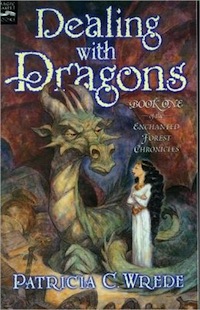
Morwen rejects most witchy sterotypes, and subverts the rest, as befits a resident of Patricia Wrede’s Enchanted Forest Chronicles. Sure she wears black robes, but only because they’re practical. She often brews a particular potion—but it’s really just cider, made from her homegrown and completely non-magical apples. And she does love cats, but rather than having a single familiar she has nine furry friends: Jasmine, Murgatroyd, Fiddlesticks, Miss Eliza Tudor, Scorn, Trouble, Jasper Darlington Higgens IV, Chaos, and Aunt Ophelia—and they’re every color except black.
The Physick Book of Deliverance Dane—Katherine Howe
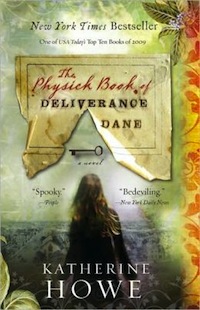
Connie Goodwin is cleaning her grandmother’s old house when she discovers a scrap of paper with the name “Deliverance Dane” tucked inside a key hidden between the pages of a 300-year-old family Bible.
As she traces her family’s history to find evidence of a woman named Deliverance, she finds a book of spells and potions that soon become vitally important: her new friend Sam is being targeted by a series of increasingly sinister events, and deciphering Deliverance’s work may be the only key to saving him. The book weaves the modern story together with flashbacks to the Salem hysteria to create a gripping account of witchcraft and love.
The Penguin Book of Witches—Katherine Howe (Editor)
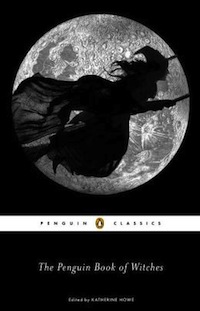
Katherine Howe also works in the realm of non-fiction, most recently editing The Penguin Book of Witches. Not your average collection of spoooooky witch stories, these primary sources include accounts of women who were burned, staked, and stoned (in the streets of Philadelphia during the Continental Congress, no less), a witch-hunting manual written by King James, and the lofty condemnation of Increase Mather.
Rather than just rehashing the stories we all know from Salem, Howe’s book shows us how peoples’ fear of witches destroyed lives and communities, and lived side-by-side with some of the greatest moments of The Enlightenment. As related in this NPR interview, Howe’s interest in witches is personal as well as historical: her ancestors include two women accused during the Salem witch trials, Elizabeth Procter and Elizabeth Howe.
Practical Magic—Alice Hoffman
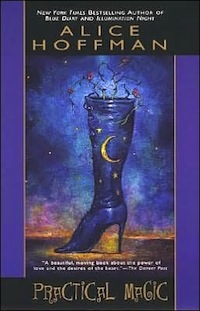
The women of the Owens family have always been accused of witchcraft—hell, the elder spinster aunts encourage it. But orphaned sisters Sally and Gillian are tired of being freaks, and decide to escape their magical lives. Sally does so by marrying and settling into family life, while Gillian, ever the impulsive and reckless one, runs away.
Years later, when Gillian shows up at Sally’s house with a dead body in her trunk, the two women have to come to terms with their family, their history, and their own magical natures.
Garden Spells—Sarah Addison Allen

The Waverleys have tended their magical garden for generations. The other residents of the town of Bascom, North Carolina, regard them with caution, but are happy to buy magic-infused food from Claire Waverley’s kitchen, or accept prophetic gifts from Claire’s cousin, Evanelle.
When Claire’s long-estranged sister suddenly shows up with a daughter in tow, the family has to decide how to create a future together, and how to deal with their legacy in Bascom. As in Practical Magic, a history of witchcraft binds sisters together, and creates a bond that provides a foundation for a different type of family.
The Witch of Blackbird Pond—Elizabeth George Speare
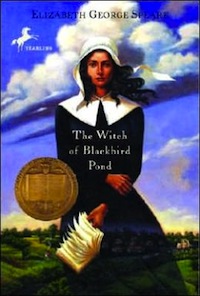
This is a classic witchy starter kit as well as an involving story about tolerance and acceptance. For those of you who didn’t get to it in middle school: Kit is a bright 16-year-old from Barbados, who is betrothed to a gargoylish older man after her father’s death. She runs away to Connecticut to live with her Puritan relatives, and soon learns that she has to live a much stricter way of life, made up mostly of mind-numbing work and six hours of church on Sundays.
Naturally, she befriends the town’s other misfit, a kind Quaker woman, and finds herself having to fight the entire community when witchcraft accusations start flying. Will Kit weigh as much as a duck, or will she teach the Puritans to be a little more understanding?
Harry Potter series—J.K. Rowling
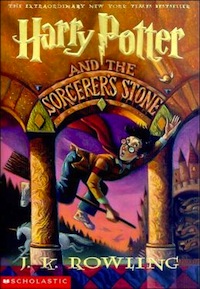
Since no list of fictional witches would be complete without Hermione Granger, I’m including J.K. Rowling’s series here. Hermione isn’t just the best literary friend you could have—smart, funny, and more than willing to bend school rules in the name of thwarting evil—she’s also the best young witch at Hogwarts. And since she doesn’t have the benefit of a wizarding world childhood, she succeeds through study and hard work. All that hard work pays off when she, Harry, and Ron leave school to fight an underground war against the greatest threat the world—magical and muggle alike—has ever known. Seriously, that bewitched bag of tricks she carries around all year really saves their necks on any number of occasions.
Equal Rites/Wyrd Sisters/Witches Abroad/etc.—Terry Pratchett
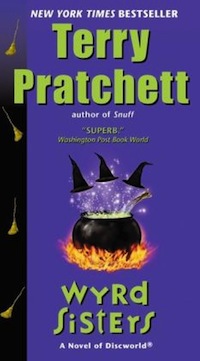
Terry Pratchett’s Discworld series encompasses pretty much every facet of life at this point, and it has skewered just about every fantasy trope. Witches are no exception: He gave us the best crone ever in Granny Weatherwax (not that I would ever call her that to her face) a great Mother in Nanny Ogg, and multiple Maidens, Magrat Garlick and Agnes Nitt. And that’s before we get into Tiffany Aching’s arc, or Granny’s sister Lily, or Mrs. Earwig, or Goodie Hamstring…In Equal Rites, Pratchett explores the fantasy conventions around practitioners of magic – do women have to be witches? Or can a girl be destined to be a wizard instead? Wyrd Sisters plays with Shakespeare, as Granny, Nanny, and Magrat attempt to save a kingdom. And Witches Abroad sends the Three across all of Discworld, where they have to battle a ridiculous number of fairytale conventions.











Pretty certain you meant “no list of witches would be complete without” there….
At first I thought that was Hermione inside of a new TARDIS…
You forgot A Nameless Witch by A. Lee Martinez (one of my favorites of his).
The heroine in Patricia Wrede’s ‘Enchanted Forest Chronicles’ is Princess Cimorene. I can’t remember where she stands on the cat count. ;->
Other additions to the list could be Agnes Nutter (and her descendant, Anathema Device) from Gaiman and Pratchett’s ‘Good Omens’.
I seem to recall that Kiki’s Delivery Service was based on a book…
@@.-@ Cimorene is, arguably, only the heroine of the first two books. Morwen is the POV character and the focal point of the third book, and Cimorene’s son is the MC of the fourth (slash first, depending on how you count).
Thanks, SunDriedRainbow. Morwen and her cats didn’t sound familiar at all. I read the earliest written ones with Cimorene as the MC years ago and will have to dig out the others to re-familiarize myself.
Children’s books featuring witches:
The Witch Family, by Eleanor Estes. Big Witch, Little Witch, and Baby Witch, and the two little girls down the hill who invented them — or did they?
The Dorrie series, by Patricia Coombs. Dorrie is a witch in training, being looked after by the Big Witch. Her hat is always a bit crooked, her socks never match, and her cat Gink is arguably the smartest one there (aside from Cook). But she has a good amount of common sense and luck, and fixes things when they go wrong.
The Witches of Karres, by James Schmitz. Witches! Spaceships! Klatha hooks! Vatches! And one very confused spaceship captain, who is way out of his depth. He’d better learn to swim, quick.
Adding to the children’s list and the Pratchett list, Tiffany Aching in The Wee Free Men and its sequels is one of the most self-determined characters I’ve read, and just right for a 10-year-old reader.
I’m surprised that Kim Harrison’s The Hollows series is not the list. Furthermore, how can you have a list of books about witches and stop at 12 and not 13?!?